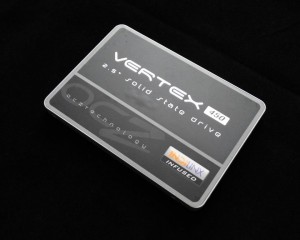 Our introduction and analysis of the OCZ Vertex 450 6Gbps SSD marks the first release of the Vertex family with an Indilinx controller since 2009, a return that includes some very attractive features…including price.
Our introduction and analysis of the OCZ Vertex 450 6Gbps SSD marks the first release of the Vertex family with an Indilinx controller since 2009, a return that includes some very attractive features…including price.
The OCZ Vertex 450 contains the new and improved Barefoot 3 M10 controller and follows the Vector’s lead by using OCZ in-house ASIC technology. Considering the success and performance of the Vector, one just has to wonder what makes the Vertex 450 so special.
OCZ AND VERTEX HISTORY
The main players at the beginning of the client/consumer SSD game were SanDisk, Samsung, OCZ and Intel, for the most part, with a few others marketing Samsung SSD knockoffs with their own brand sticker to get things going. At different levels, these companies lived the era of SSD trial and error and were really the innovators of SSD technology today. The SSD crowd was very vocal about the inevitable failure SSD technology on the move from SLC to MLC memory, and Intel was just about to release its X25M 160GB SSD for a whopping $945.
OCZ realized success with the original Indilinx Barefoot controlled Vertex SSD but continuation with Indilinx ran into a snag with delayed SATA 3 controller development. During this time, OCZ established a partnership with SandForce and released the Vertex 2 with the 3Gbps SF-1200 controller, and subsequent Vertex 3 with the 6Gbps SF-2281 flash storage processor. Due to it’s popularity, the V3 remains a member of the OCZ production line still today. Relying on Marvell silicon, OCZ last year released the ‘Indilinx Infused’ Vertex 4 and had the advantage of their Indilinx purchase for in-house firmware expertise. Today’s release of the Vertex 450 marks the first Vertex to contain OCZ’ own proprietary controller and firmware expertise, a feat made possible through their purchases of both Indilinx and PLX.

 OCZ VERTEX 450 SSD SPECIFICATIONS
OCZ VERTEX 450 SSD SPECIFICATIONS
The OCZ Vertex 450 is a SATA 3 SSD that will be available in capacities of 128, 256 and 512GB. It has a three year warranty and is rated for 20GB host writes a day during that period and under typical client workload. Performance is variable, depending on capacity, and our 256GB sample is rated at 540MB/s read and 525MB/s write transfer speeds with 85,000 random read IOPS and 90,000 random write IOPS at low 4K disk access. The 128GB version is rated at 525/290/75,000/70,000 with the 512Gb capacity being similar at 540/530/85,000/90,000. MSRP for the V450 is $129.99 (128GB), $234.99 (256GB) and $499.99 (512GB), leaving the two higher capacities below the $1/GB mark which is an excellent release price. Check Amazon Now.![]()
OCZ lists their 2013 product line-up as the Vector 150 replacing the Vector SSD, the Vertex 4 replaced by the Vertex 450 and the long awaited Vector PCIe SSD set for release in Q3 and replacing the Revo. We have no news on the Vector 150 as of yet.
VERTEX 450 SSD COMPONENTS
The exterior casing of the Vertex 450 is of a weighty 2.5″ 7mm for factor with an attractive branding sticker on its face. It is a two piece shell protecting the PCB, and the base plate is secured by four screws, one of which is covered with security tape. Any damage to the tape will automatically void your warranty.

 The PCB contains OCZ’ proprietary Indilinx Barefoot 3 BF3-M10 controller, sixteen modules of Micron 20nm MLC synchronous NAND flash memory, and two modules of Micron 256MB DDR3-1600 DRAM cache memory.
The PCB contains OCZ’ proprietary Indilinx Barefoot 3 BF3-M10 controller, sixteen modules of Micron 20nm MLC synchronous NAND flash memory, and two modules of Micron 256MB DDR3-1600 DRAM cache memory.
Although the RAW capacity is 256GB (16x16GB), the end user volume available for storage is 238GB.
 The SSD Review The Worlds Dedicated SSD Education and Review Resource |
The SSD Review The Worlds Dedicated SSD Education and Review Resource | 
Any clue as to when will a new LSI Sandforce generation of consumer SSDs will reach the market – they seem long overdue…
The SF-2000 Rev B, which is a low power version of the original, has been announced in the last few days but no news on any new version controller.
Thanks.
Maybe they’ll take some more time, like Indilinx took from Vertex 1 to Vector products… but it is a pity as it would create more competition.